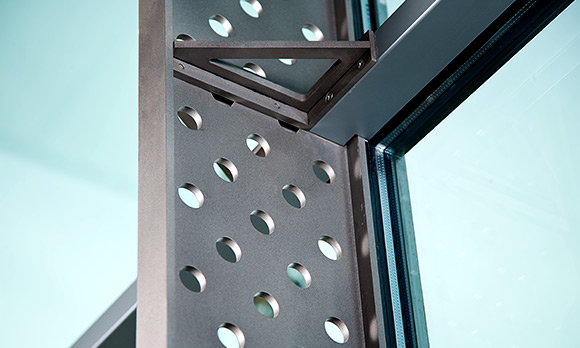 Curtainwall Systems
Curtainwall Systems

SteelBuilt Curtainwall® Systems give you all the advantages of steel: larger free spans, narrower sight lines and improved thermal performance over traditional aluminum curtain wall systems. Utilized throughout Europe for many years, SteelBuilt Curtainwall Systems have been tested to North American standards for tremendous new design opportunities.
KEY FEATURES
|
Optional Features
|
Performance Data
PERFORMANCE OVER TYPICAL ALUMINUM SYSTEMS
Thermal Transmittance1 (btu/hr + ft2 + °F)
| Glass U-Factor2 | Overall U-Factor Stainless Steel Cover Cap |
Overall U-Factor Aluminum Cover Cap |
|---|---|---|
| 0.48 | 0.51 | 0.51 |
| 0.44 | 0.49 | 0.49 |
| 0.30 | 0.35 | 0.36 |
| 0.247 | 0.31 | 0.32 |
| 0.123 | 0.19 | 0.20 |
- U-Factors are determined in accordance with NFRC 100. Approximate values only, actual values will vary depending on specific product configuration per project requirements.
- Glass properties are based on center of glass values and are obtained from your glass supplier.
Testing
Frame tests performed in accordance with:
| AAMA 501.1 | Dynamic Water Penetration |
| ASTM E283 | Air Performance |
| ASTM E331 | Static Water Penetration |
| ASTM E330 | Structural Performance |
Comparison
SteelBuilt Curtainwall® Family vs. Typical Aluminum Curtain Wall
Not as durable as steel
Less reinforcement required (if any)
Durability
Less reinforcement required (if any)
Durability

Design Ideas

Curtain Wall Basics
Learn about the different types of curtain walls, steel vs. aluminum systems, product testing, how curtain walls can contribute to LEED standards, curtain wall applications, innovations, challenges and more.

Steelbuilt Design Options
Explore this interactive tool to get a feel for the various benefits and options available when building with SteelBuilt Curtainwall® Systems.





